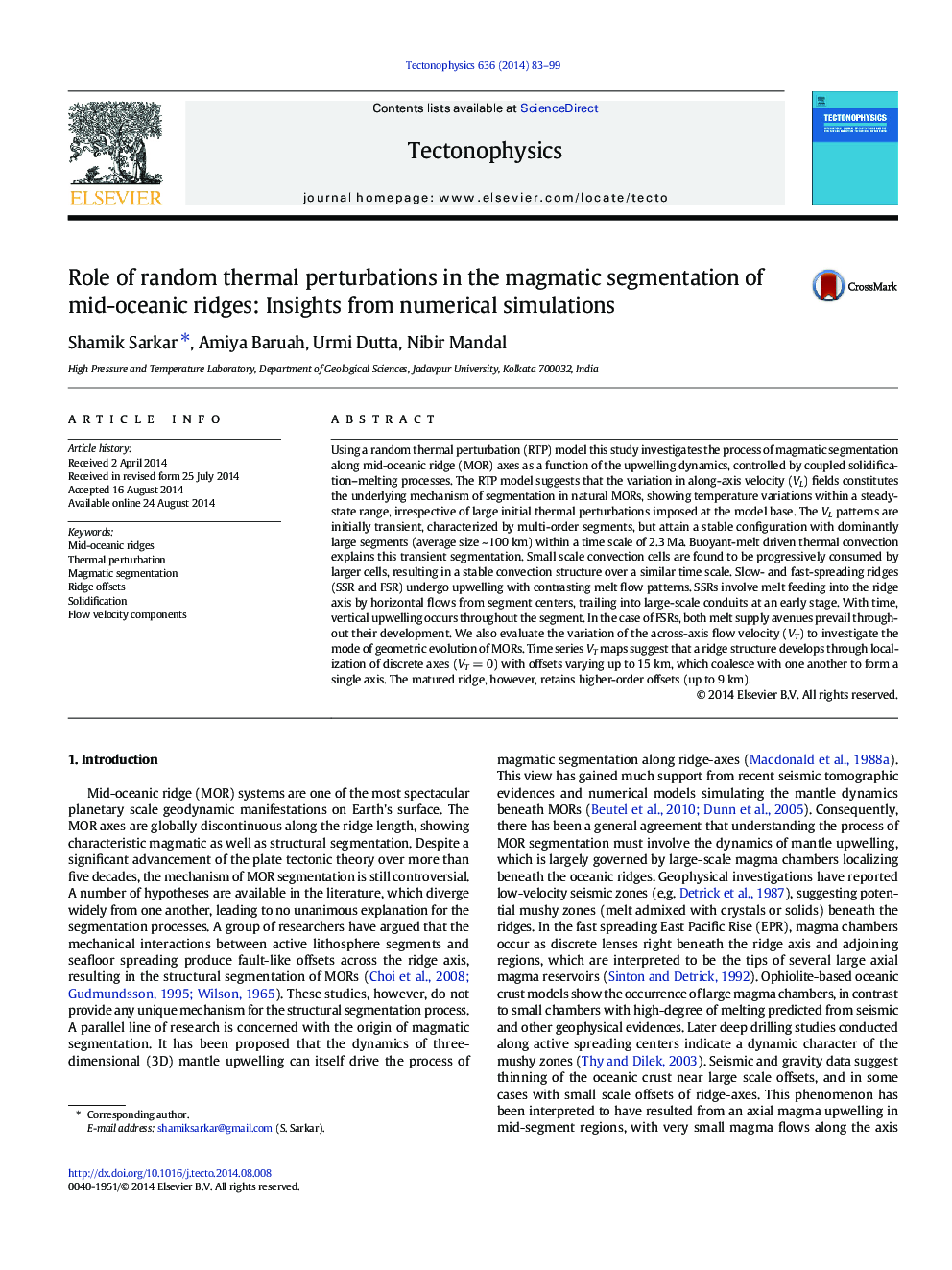| کد مقاله | کد نشریه | سال انتشار | مقاله انگلیسی | نسخه تمام متن |
|---|---|---|---|---|
| 4691790 | 1636755 | 2014 | 17 صفحه PDF | دانلود رایگان |
• Evolution of mid-oceanic ridges is modeled with random thermal perturbations.
• Magma velocity maps indicate stabilization of ridge segments within 2.3 Ma.
• Fast- and slow-spreading ridges involve varying melt driven convection patterns.
Using a random thermal perturbation (RTP) model this study investigates the process of magmatic segmentation along mid-oceanic ridge (MOR) axes as a function of the upwelling dynamics, controlled by coupled solidification–melting processes. The RTP model suggests that the variation in along-axis velocity (VL) fields constitutes the underlying mechanism of segmentation in natural MORs, showing temperature variations within a steady-state range, irrespective of large initial thermal perturbations imposed at the model base. The VL patterns are initially transient, characterized by multi-order segments, but attain a stable configuration with dominantly large segments (average size ~ 100 km) within a time scale of 2.3 Ma. Buoyant-melt driven thermal convection explains this transient segmentation. Small scale convection cells are found to be progressively consumed by larger cells, resulting in a stable convection structure over a similar time scale. Slow- and fast-spreading ridges (SSR and FSR) undergo upwelling with contrasting melt flow patterns. SSRs involve melt feeding into the ridge axis by horizontal flows from segment centers, trailing into large-scale conduits at an early stage. With time, vertical upwelling occurs throughout the segment. In the case of FSRs, both melt supply avenues prevail throughout their development. We also evaluate the variation of the across-axis flow velocity (VT) to investigate the mode of geometric evolution of MORs. Time series VT maps suggest that a ridge structure develops through localization of discrete axes (VT = 0) with offsets varying up to 15 km, which coalesce with one another to form a single axis. The matured ridge, however, retains higher-order offsets (up to 9 km).
Journal: Tectonophysics - Volume 636, 1 December 2014, Pages 83–99
